We made it!
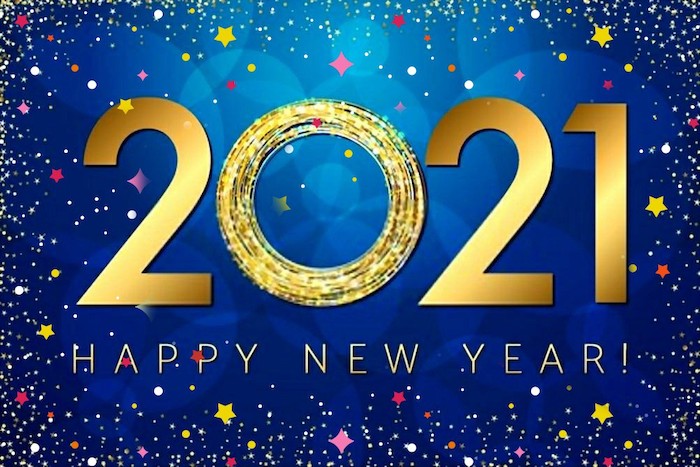

Alliance, Support & Activism

I wanted to be a priest ever since I was a little boy and I overcame the greatest of odds to achieve my life’s goal. On Saturday, November 22, 1975, I was ordained a Catholic Priest at the Cathedral of Saint Francis de Sales in Oakland, CA.
Sadly, it all came crashing to a halt only 6 years later with the publication of my doctoral dissertation.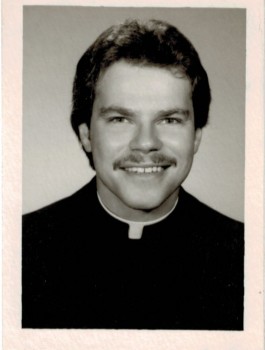
The Oblates of Mary Immaculate, my religious community at the time, assigned me to post graduate studies in San Francisco in 1978. I completed that assignment in January 1981 with my dissertation, Gay Catholic Priests; A Study of Cognitive and Affective Dissonance. A media firestorm erupted shortly there after when I publicly identified myself as gay. (I had come out to my provincial superiors before I was ordained six years earlier.)
When word got to Rome, however, the Oblates began a process to dismiss me from the community. They erroneously accused me of “living a false lifestyle” because of my public declaration a month earlier. The community leadership claimed that anyone who would self identify as gay must also be sexually active. In their defense, it was 1981, and I had just studied a population of gay priests in the active ministry, years and years before the Church could even bring itself to admit that there were such a thing as gay priests in their midst. Nonetheless, my efforts to explain myself and the nature of self-identification fell on deaf ears. I was to be made an example of how others would be treated if they came out.
Priesthood was my whole life. To be cut off from the community and ministry in an instant, without due process nearly killed me. And thus, began a grueling 13-year battle with the Church to save my good name, my priesthood, and my ministry. I chronicled this odyssey in a book published in 2011, Secrecy, Sophistry And Gay Sex In The Catholic Church.
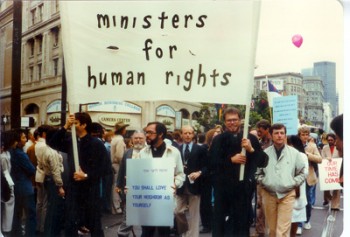 I lost the battle in 1994; I was dismissed from the Oblates. But I believe I won the war.
I lost the battle in 1994; I was dismissed from the Oblates. But I believe I won the war.
Martin Luther King, Jr once said, “The arc of the moral universe is long but it bends toward justice.” Looking back on the last 45 years, I can see clearly that Dr King was right. LGBT people have gone from pariah status to having their relationships granted the same legal and societal status as straight people. Acceptance of LGBT people is at an all-time high in this country and throughout most of the world. And young U.S. Catholics overwhelmingly accept LGBT people.
Unfortunately, Church leadership continues to drag it’s feet. While there are some enlightened bishops, and certainly the Pope is pointing the way, most of the other church leadershiop have their head in the sand. The rear-guard action of trying to defend the indefensible continues unabated. Gay priests are still persecuted for coming out and the clerical closet continues to make Catholic priests sick, sometimes even to death, One has to ask; how can anyone preach the Good News while living a lie?

Forty five years after ordination, I believe that I now finally know the real meaning of priesthood and ministry. And I can safely say that it has nothing to do with the ritual depicted in the photos above. My priesthood and ministry are rooted in knowing who I am and knowing that God called me as I am. My priesthood is to the people on the margins and the sexual fringe. And my priesthood means speaking truth to power and supporting others to do the same. I continue to stand against the fear, ignorance, and repression that destroys God’s people. And if I have to do my priesthood standing this distance from the altar, then I’m ok with that.
A contemporary Jesus arrives as a young gay man in a modern city with “The Passion of Christ: A Gay Vision” by Douglas Blanchard. The 24 paintings present a liberating new vision of Jesus’ final days, including Palm Sunday, the Last Supper, and the arrest, trial, crucifixion and resurrection.
“Christ is one of us in my pictures,” says Blanchard. “In His sufferings, I want to show Him as someone who experiences and understands fully what it is like to be an unwelcome outsider.” Blanchard, an art professor and self-proclaimed “very agnostic believer,” used the series to grapple with his own faith struggles as a New Yorker who witnessed the 9/11 terrorist attacks.
























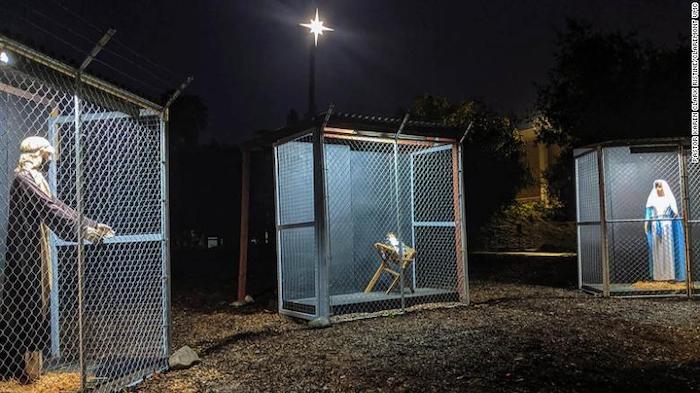
A contemporary Jesus arrives as a young gay man in a modern city with “The Passion of Christ: A Gay Vision” by Douglas Blanchard. The 24 paintings present a liberating new vision of Jesus’ final days, including Palm Sunday, the Last Supper, and the arrest, trial, crucifixion and resurrection.
“Christ is one of us in my pictures,” says Blanchard. “In His sufferings, I want to show Him as someone who experiences and understands fully what it is like to be an unwelcome outsider.” Blanchard, an art professor and self-proclaimed “very agnostic believer,” used the series to grapple with his own faith struggles as a New Yorker who witnessed the 9/11 terrorist attacks.
























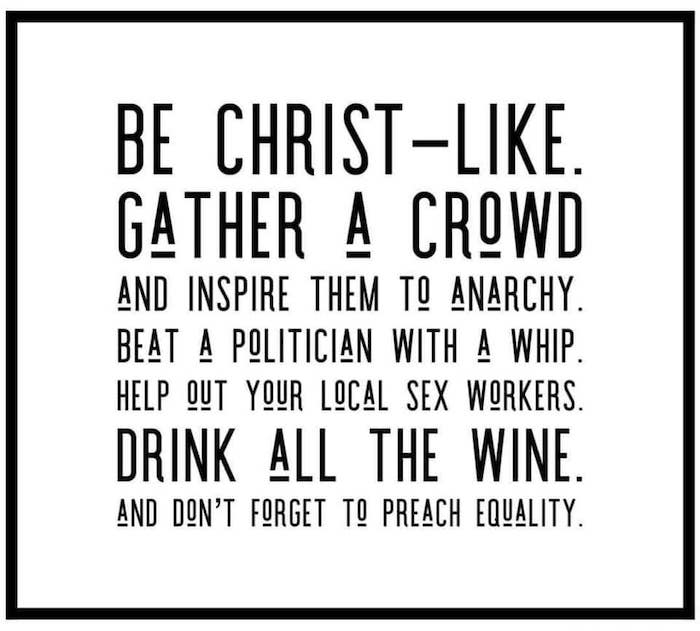



By John L. Allen Jr.
Heading into this week’s fall meeting of the Catholic bishops of the United States in Baltimore, the forecast was for dramatic action on the clerical sexual abuse scandals that have rocked the Church for the last six months, during what some dubbed its “summer of shame.”
All that changed on Monday, when the president of the conference, Cardinal Daniel DiNardo of Galveston-Houston, announced that late Sunday the bishops were asked to stand down by the Vatican, awaiting a three-day summit in February in Rome convened by Pope Francis for the presidents of all the bishops’ conferences in the world to discuss the abuse crisis.
Some bishops are still pressing for non-binding votes on some of the action items, such as a new code of conduct subjecting themselves to the same “zero tolerance” policy as everyone else, as a way of sending a signal to Rome ahead of that February gathering. For right now, it remains to be seen what may result.
So, what gives? Could the Vatican actually be this tone-deaf, or is there some other explanation for the request for a delay?
Early answers seem to be: Yes, the Vatican really could be that tone-deaf. And yes, there may also be something else going on.
In terms of the capacity to send precisely the wrong signal at the worst possible time, it sometimes seems as if the Vatican almost has a patent. Bear in mind that just last month, a summit of bishops from around the world, called a “synod,” walked up to the brink of apologizing for the abuse scandals and reaffirming its commitment to “zero tolerance” — both of which have been staples of official Catholic rhetoric for more than a decade now — only to back off due to opposition from bishops from Africa, parts of Asia, and even several leading Italian prelates.
Also bear in mind that last week, the Catholic bishops of France brought out strong new anti-abuse policies, including an independent lay investigatory panel, and the bishops of Italy are expected to roll out their own new measures on Thursday. Granted, to some extent both conferences are still playing catch-up ball with respect to the United States on the abuse crisis, so the issues are somewhat different.
Nonetheless, it’s curious why bishops from other parts of the world are being encouraged to move full steam ahead, while only the Americans have been asked to slow down.
Before ascribing this entirely to Rome being obtuse, there’s another factor that should be considered.
The Catholic Church is governed by a legal code known as canon law, and according both to bishops and canon lawyers, there were serious problems under that code with many of the proposals prepared for this week’s meeting. During Monday morning’s session, DiNardo acknowledged that the action items on accountability for bishops were only finalized Oct. 30, and the Vatican had flagged several areas where they would be difficult to reconcile with Church law.
Had the bishops gone ahead and voted, the result could have created a scenario in which their proposals had to be vetoed in Rome, creating a set of optics that no one really wanted.
In other words, a plausible case can be made that to some extent, this is the Vatican saving the American bishops from themselves.
In reality, however, that explanation simply redistributes the blame rather than making this situation anything less than a disaster. The bishops are at fault, perhaps, for not doing their homework but Rome still is at fault for not encouraging a vigorous response earlier in the game, and for tying the US ability to act to a brief global summit three months from now in which the commitment levels of the various parties almost certainly won’t be the same.
In other words, the US bishops’ meeting this week shapes up as another missed opportunity. All eyes will now turn to the February meeting in Rome, because it’s not clear how many more missed opportunities the Catholic public in this country, at least, will be willing to forgive.
Complete Article ↪HERE↩!